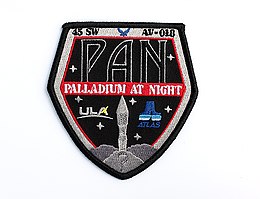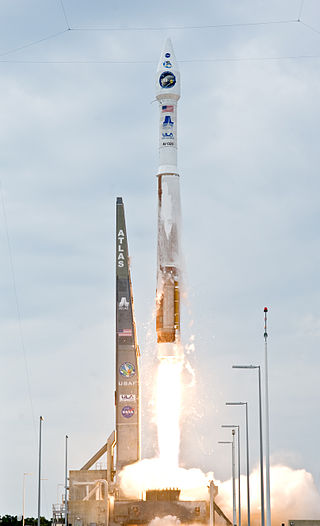
Atlas V is an expendable launch system and the fifth major version in the Atlas launch vehicle family. It was originally designed by Lockheed Martin, now being operated by United Launch Alliance (ULA), a joint venture between Lockheed Martin and Boeing. Atlas V is also a major NASA launch vehicle. It is America's longest-serving active rocket. In August 2021, ULA announced that Atlas V would be retired, and all 29 remaining launches had been sold. As of 10 November 2022, 19 launches remain.
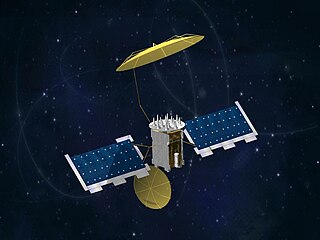
The Mobile User Objective System (MUOS) is a United States Space Force narrowband military communications satellite system that supports a worldwide, multi-service population of users in the ultra high frequency (UHF) band. The system provides increased communications capabilities to newer, smaller terminals while still supporting interoperability with legacy terminals. MUOS is designed to support users who require greater mobility, higher bit rates and improved operational availability. The MUOS was declared fully operational for use in 2019.

United Launch Alliance (ULA) is an American spacecraft launch service provider that has manufactured and operated a number of rocket vehicles that are capable of launching spacecraft into orbits around Earth and to other bodies in the Solar System and beyond. The company, which is a joint venture between Lockheed Martin Space and Boeing Defense, Space & Security, was formed in December 2006. Launch customers of the United Launch Alliance include the Department of Defense (DoD), NASA, and other organizations.

This article outlines notable events occurring in 2005 in spaceflight, including major launches and EVAs. 2005 saw Iran launch its first satellite.
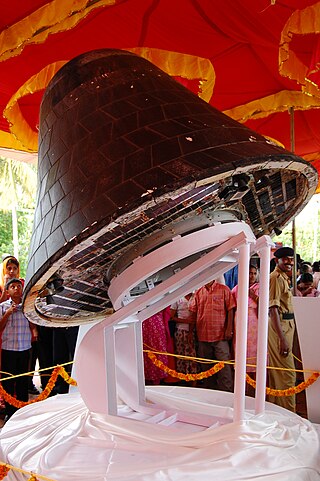
The year 2007 contained several significant events in spaceflight, including a Chinese ASAT test, the launches of the US Phoenix and Dawn missions to study Mars and Asteroid belt respectively, Japan's Kaguya Lunar orbiter, and the first Chinese Lunar probe, Chang'e 1.

The year 2008 contained several significant events in spaceflight, including the first flyby of Mercury by a spacecraft since 1975, the discovery of water ice on Mars by the Phoenix spacecraft, which landed in May, the first Chinese spacewalk in September, the launch of the first Indian Lunar probe in October, and the first successful flight of a privately developed orbital launch vehicle by SpaceX's Falcon 1.

Atlas is a family of US missiles and space launch vehicles that originated with the SM-65 Atlas. The Atlas intercontinental ballistic missile (ICBM) program was initiated in the late 1950s under the Convair Division of General Dynamics. Atlas was a liquid propellant rocket burning RP-1 kerosene fuel with liquid oxygen in three engines configured in an unusual "stage-and-a-half" or "parallel staging" design: two outboard booster engines were jettisoned along with supporting structures during ascent, while the center sustainer engine, propellant tanks and other structural elements remained connected through propellant depletion and engine shutdown.
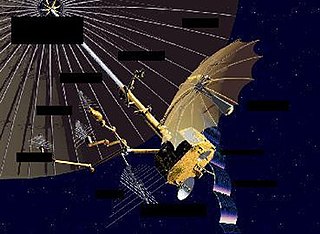
Orion, also known as Mentor or Advanced Orion, is a class of United States spy satellites that collect signals intelligence (SIGINT) from space. Operated by the National Reconnaissance Office (NRO) and developed with input from the Central Intelligence Agency (CIA), eight have been launched from Cape Canaveral on Titan IV and Delta IV launch vehicles since 1995.
Garuda 1 was an Indonesian communications satellite which is operated by ACeS. It was constructed by Lockheed Martin and is based on the A2100AXX satellite bus. It has two very large antennas, each measuring 12 meter in diameter. Launch occurred on 12 February 2000, at 09:10:54 GMT. The launch was contracted by ILS, and used a Proton-K/DM3 carrier rocket flying from Site 81/23 at the Baikonur Cosmodrome.

Several significant events in spaceflight occurred in 2009, including Iran conducting its first indigenous orbital launch, the first Swiss satellite being launched and New Zealand launching its first sounding rocket. The H-IIB and Naro-1 rockets conducted maiden flights, whilst the Tsyklon-3, Falcon 1 and Ariane 5GS were retired from service. The permanent crew of the International Space Station increased from three to six in May, and in the last few months of the year, Japan's first resupply mission to the outpost, HTV-1, was conducted successfully.

USA-200, also known as NRO Launch 28 or NROL-28, is an American signals intelligence satellite, operated by the National Reconnaissance Office. Launched in 2008, it has been identified as the second satellite in a series known as Improved Trumpet, Advanced Trumpet, or Trumpet follow-on; a replacement for the earlier Trumpet series of satellites.
The Broadcasting Satellite System Corporation (B-SAT) is a Japanese corporation established in April 1993 to procure, manage and lease transponders on communications satellites. Its largest stockholder, owning 49.9%, is NHK, the Japan Broadcasting Corporation. In 1994, it was ranked by Space News as the world's 19th largest fixed satellite operator.
Kosmos 8, also known as DS-K-8 No.1 and occasionally in the West as Sputnik 18 was a technology demonstration satellite which was launched by the Soviet Union in 1962. It was the eighth satellite to be designated under the Kosmos system, and the third spacecraft launched as part of the DS programme to successfully reach orbit, after Kosmos 1 and Kosmos 6. Its primary mission was to demonstrate the technologies of SIGINT for future Soviet military satellites.
EchoStar X, also known as EchoStar 10, is an American geostationary communications satellite which is operated by EchoStar on behalf of Dish Network. It is positioned in Geostationary orbit at a longitude of 110° West, from where it is used to provide direct broadcasting services to the United States.
Galaxy 11 is an American geostationary communications satellite which is operated by Intelsat. It is located in geostationary orbit at a longitude of 32.8 degrees east, where it serves as a backup to the Intelsat 802 spacecraft. It was originally operated at 99° West and later spent most of its operational life at 91° West, from where it was used to provide communications services to Brazil and North America.
JCSAT-110, also known as N-SAT 110, JCSAT-7, Superbird-5 and Superbird-D, is a Japanese geostationary communications satellite which was operated by JSAT Corporation and Space Communications Corporation until both companies merged into SKY Perfect JSAT Group in 2008. It is positioned in geostationary orbit at a longitude of 110° East, from where it is used to provide communications services to Japan.

USA-214, also known as Advanced Extremely High Frequency-1 or AEHF-1, is a military communications satellite operated by the United States Air Force. It is the first of six satellites to be launched as part of the Advanced Extremely High Frequency program, which will replace the earlier Milstar system.
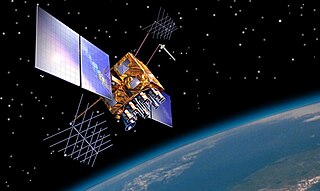
USA-190, also known as GPS IIR-15(M), GPS IIRM-2 and GPS SVN-52, is an American navigation satellite which forms part of the Global Positioning System. It was the second of eight Block IIRM satellites to be launched, and the fifteenth of twenty one Block IIR satellites overall. It was built by Lockheed Martin, using the AS-4000 satellite bus.

USA-203, also known as GPS IIR-20(M), GPS IIRM-7 and GPS SVN-49, is an American navigation satellite which was intended to become part of the Global Positioning System. It was the sixth of seven Block IIRM satellites to be launched, and the twentieth of twenty one Block IIR satellites overall. It was built by Lockheed Martin, using the AS-4000 satellite bus, and had a mass of 2,032 kilograms (4,480 lb).
